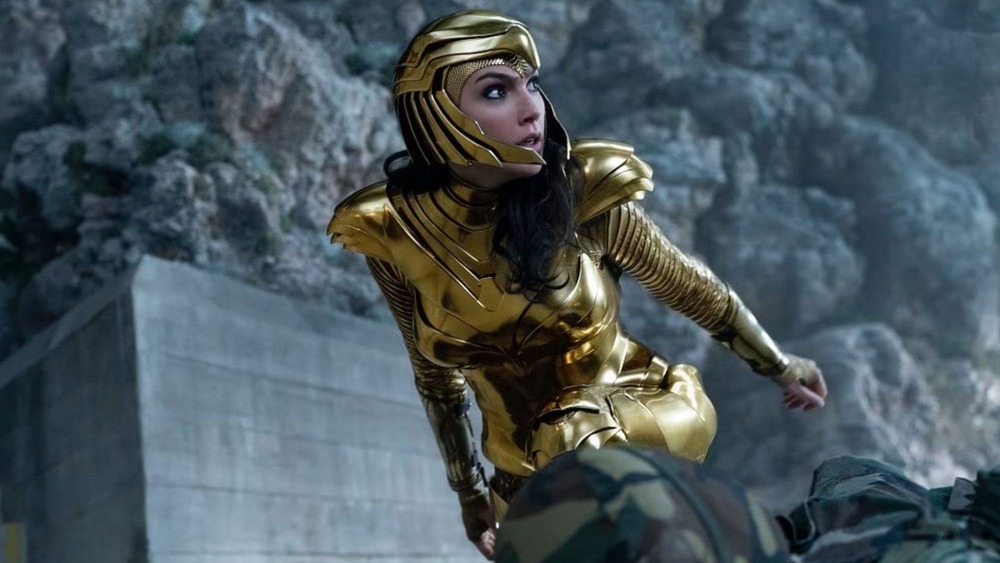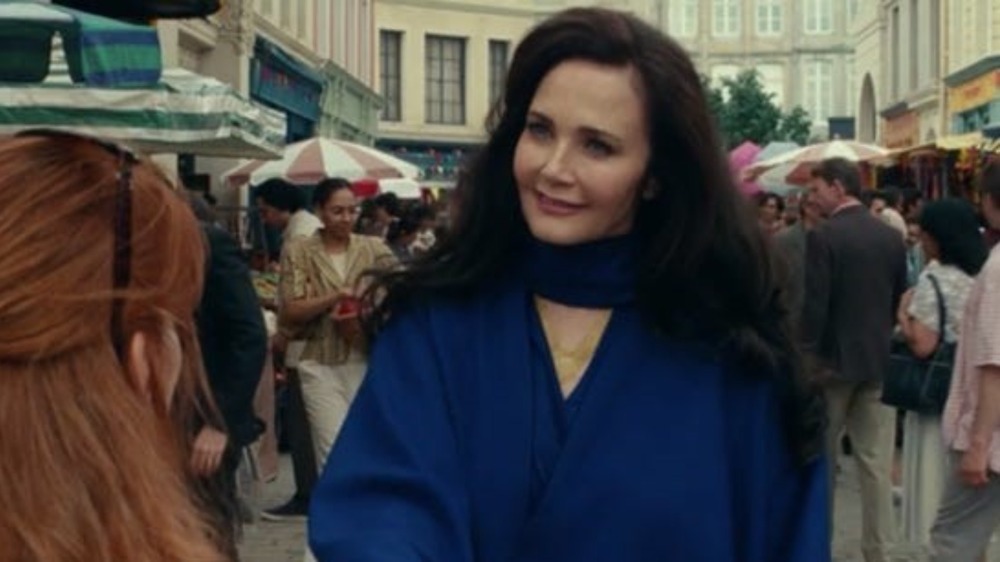Wonder Woman 1984's Post-Credits Scene Explained
Contains major spoilers for Wonder Woman 1984
Whether you ventured out to the theaters to see Wonder Woman 1984, or stayed in and streamed the blockbuster film on HBO Max, seeing the Amazonian hero again was one of the few highlights of 2020. And although director Patty Jenkins couldn't have possibly known just how much the world was going to need a dose of Diana Prince's positivity after this dumpster fire of a year, the film's joyfully nostalgic mid-credits scene certainly lends credence to the theory that she might be just a tad bit clairvoyant.
Unlike Marvel movies, DC superhero films don't always include a post-credits scene that sets up a sequel or future film in the larger universe of heroes. So when a DC movie does include a stinger, it's all the more special as a result. In the case of Wonder Woman 1984, the extra scene technically airs mid-credits and doesn't appear to hint at a third film, but it's still a delightful treat for Wonder Woman fans of all ages.
One of the driving plot points of the Wonder Woman sequel is Diana's search for the gold Amazonian armor worn by Asteria, an Amazon warrior who "held back the tides of men." She eventually finds and dons the armor, but she believes Asteria has been dead for some time. During the credits, viewers discover that the famed Asteria is alive and well, and played by a familiar face to Wonder Woman devotees. In the mid-credits scene, a woman is seen walking through an open air market when she casually stops a falling poll from crushing a child. When she turns to talk to the mother of the child she just saved, we see that the Amazonian isn't Diana, but rather Asteria, who is played by Lynda Carter. Carter famously portrayed Wonder Woman on TV from 1975-1979.
Wonder Woman 1984's post-credits scene honors the original live-action Wonder Woman's legacy
While the short scene establishes that there is at least one other Amazon living among Earth's mortals, it's first and foremost a way to honor Carter's legacy as the original live-action Wonder Woman. In an interview with Glamour, Jenkins revealed she actually wanted to include the actress in the first film, but she knew it would be too jarring when she was trying to establish Gal Gadot as the new Wonder Woman.
"It was very hard in the first one because I didn't feel like it would be right to make her Diana's mother or something like that because we all associate her so much with being Wonder Woman," Jenkins explained. "Gal hadn't stepped into that fully yet, and you can't make a Superman movie where Christopher Reeve plays somebody else because we're all just gonna say, that's f***ing Superman! Superman's right there!"
However, the sequel presented the perfect opportunity to cast Carter as a legendary Amazonian who paved the way for the women of Themyscira to live in peace. "What I loved about this way of doing it is that I feel like we're really truly honoring who she is," the director told Glamour. "Who is it that inspired the legacy of the greatest hero of all time: Lynda! So it was like a perfect thing to put it both in the story but actually have it stand for exactly what she means to us."
So while Wonder Woman 1984's post-credits sequence may not set up a future movie (although Asteria could certainly appear again), it does celebrate Carter's role in making Wonder Woman one of the most recognizable and influential heroes in DC or Marvel history.

